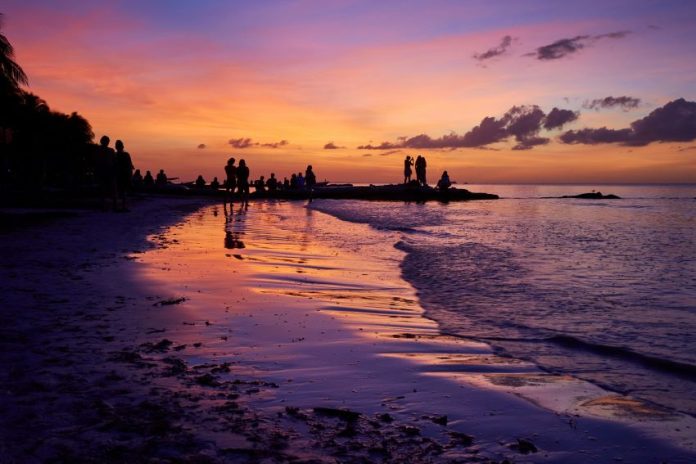Last week, we focused on authenticity as a guiding attribute for your overseas living deliberations. With this week’s emphasis on the state of Quintana Roo (its islands, superstar urban resorts, and micro-communities appealing to folks from around the world) another key attribute for successful living in Mexico is lifestyle intention.
Quintana Roo is Mexico’s tourism powerhouse and maybe the most successful vacation development story in the Americas. Today, half of Mexico’s 40 million “overnight” visitors land in Quintana Roo. And for good reason, but does that necessarily mean you’ll be happy living here?
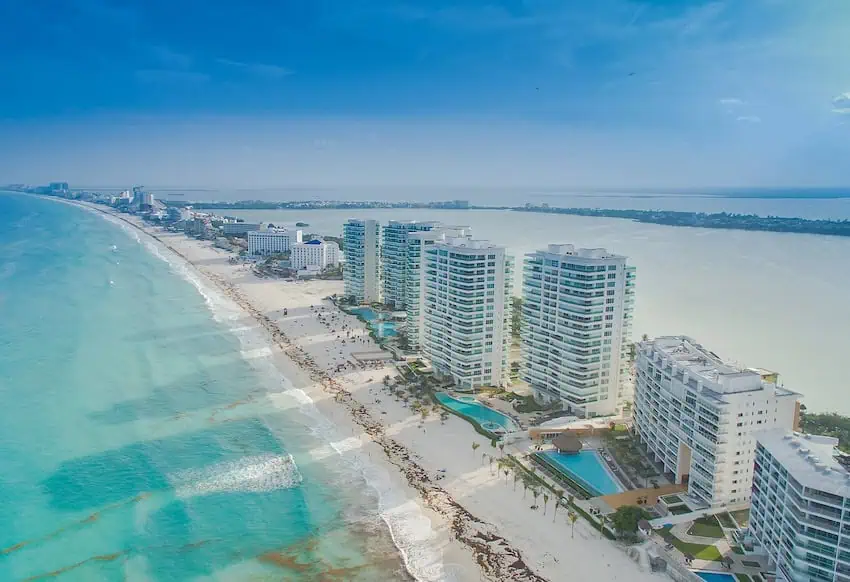
As a state, Quintana Roo was only formed in 1974; it wasn’t even a Mexican “territory” until 1902. It was scantily populated and more a string of coconut palm plantations and isolated fishing villages than a coherent development. Today, the entire 500 kilometer long Caribbean coast has long been taken over, sliced up, and plotted for some form of actual (or future) tourism or residential development. The only exception to this is the magnificent Sian Ka’an Biosphere Reserve. The southern cruise port town of Mahahual, the Maya Train, and the new international airport in Tulum ensure that the push south will march on until Mexico runs out of land at the Belize border.
Now home to two million residents and a tourism economy so famous it has eclipsed vacationer interest in going anywhere else in the Caribbean, Quintana Roo just might be your new beach living paradise. We’ve rated seven places where foreigners are flocking to experience a form of Mexico living quite unlike anywhere else in the country.
In Quintana Roo, it is important to be mindful of how the global tourism economy has been calling the shots here for the past four decades (and much more so than the Mexican government). This has undeniably caused environmental impacts but also investment, higher living standards, and generational socio-economic opportunities for hundreds of thousands of your new Mexican neighbors. Bravo for that.
But you can sometimes feel a detached “along for the ride” living experience. This is certainly true in Cancún and Playa del Carmen, where foreign-owned resort after resort has a free hand in plowing ahead (literally) in response to unquenched demand for bigger and bigger all-inclusive, walled enclaves for the world’s vacationers. You’ll have to turn inland in the state’s southern region (or an island) to find anything resembling genuine cultural authenticity.
You’ll need to get comfortable with the idea of living where others come to party and do vacation things. The cost of living (housing, food, energy, entertainment) is higher here. Across a tortilla flat landscape of Caribbean, Mayan, and modern Mexican influences, Quintana Roo has more beach community living choices than in any other Mexican state. If you want luxury, convenience, and the comforts of home, it’s hard to argue that anywhere else in Mexico is better for you.
When it comes to weather, this is Hurricane Alley, with 51 inches of annual rain and a daily mean temperature that approaches 80 degrees. April and August are the two hottest months and air-conditioned living prevails statewide. Cooling Caribbean breeze helps, but the heat and humidity should be taken into account when deciding whether to live here.
Cancún
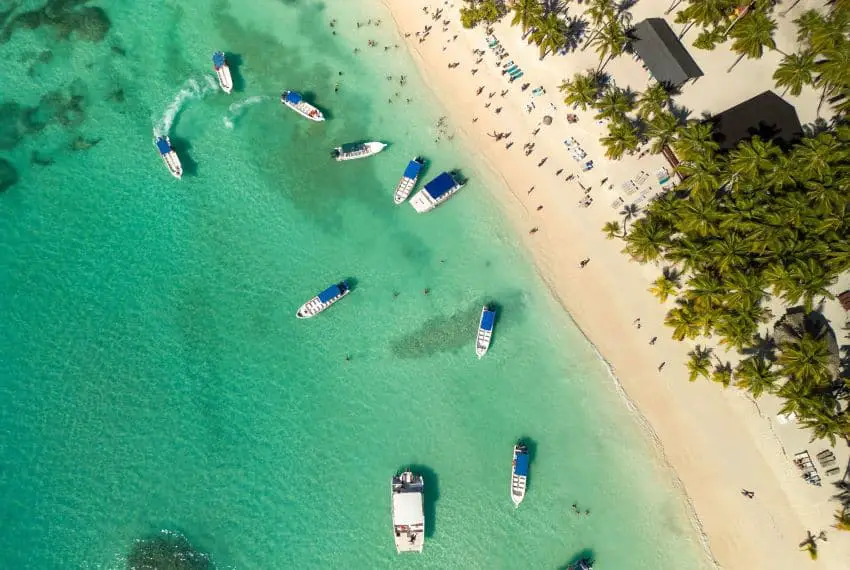
Cancún and Playa del Carmen earn higher scores (see chart), assuming living in an urban resort is your thing. Cancún (population around one million) has two physical spaces: the mainland city and the number “7-shaped” island resort (home to over 32,000 hotel rooms and surprisingly few residential living options). You’ll more likely be making your home on the mainland, in gated residential communities, a high-rise condo tower, or a private home in Cancún’s sprawl. Air connectivity to get you back home or away (Europe or South America, anyone?) is unsurpassed, with better connectivity to many European cities than even the capital.
What’s not always easy is connecting with fellow foreigners (reflected in Cancún’s low “Community” and “Culture” scores). Cancún’s civil society has been more focused on tourism careers than cultural institutions or creating communal bonds that you would expect to find in cities of comparable size and prosperity.
Puerto Morelos
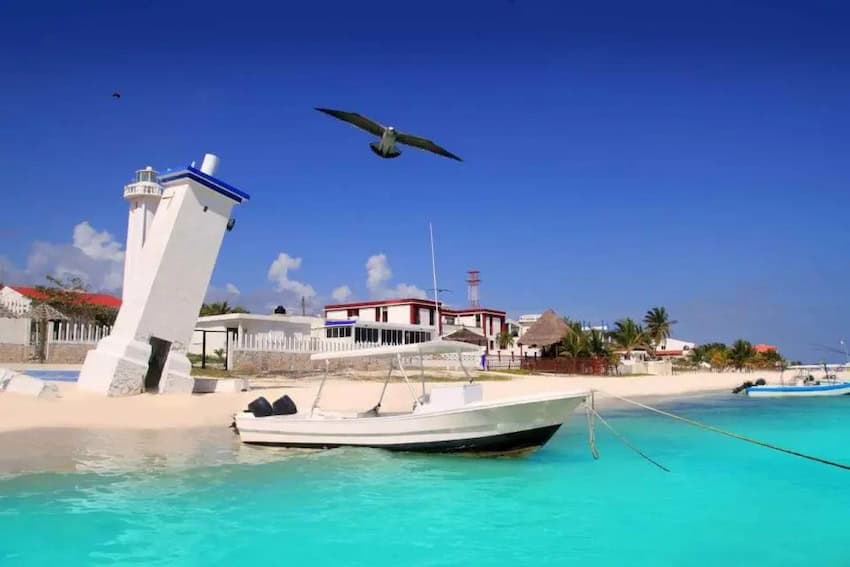
Puerto Morelos may be a better shot at a more intention-focused full-time living experience for some. It’s got a fishing town vibe and under 30,000 residents. Hemmed in by mangroves that confine inland sprawl, you can live along the narrow beach-facing corridor for a truly scenic, small-town experience or across the main highway in the “city.” Puerto affords local mobility with a Maya Train station (while Cancún City is 42 km north), a semblance of less urban living, and (mostly) avoids the daily hoards that can overwhelm other Riviera Maya locations.
Playa del Carmen
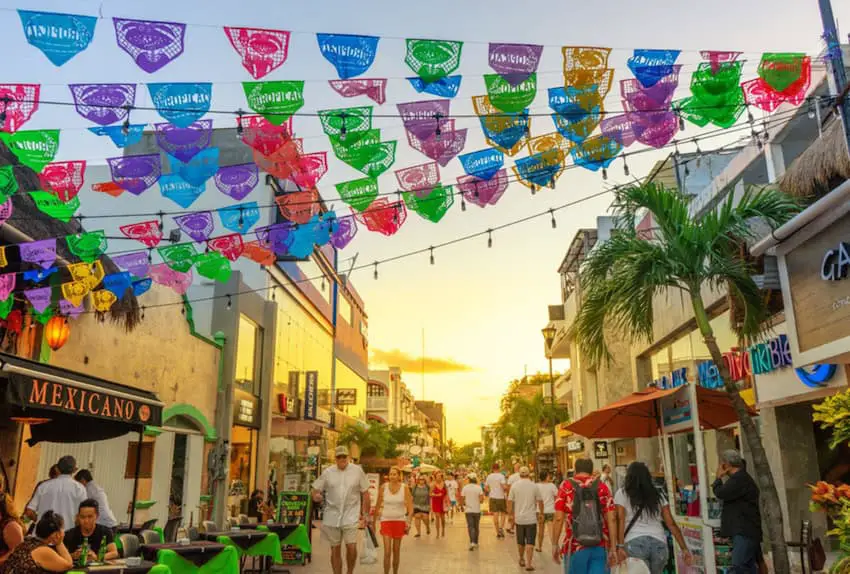
Playa del Carmen (population exceeding 300,000, if anyone is counting) has a different vibe and more pockets of genuine connections between folks from around the world and their Mexican neighbors. Since almost no one can make every day a “beach day,” you’ll find ways to learn Spanish (or maybe even Mayan), volunteer, recreate, and move about the Mexican Caribbean with so much above (and below) ground natural wonderment, found in nearby Isla Cozumel, mainland forests, jungle savanna, mangroves, cenotes, reefs, and eco-parks.
The small business scene has flourishing expat run enterprises, Mexicans from across the country, superb dining options, bars, mega-shopping options, and of course, hordes of day visitors who have made Playa’s La Quinta Avenida and nearby ferry pier a 24/7 beehive of commercialism.
Party animals will also appreciate the vibrant nightlife on offer throughout the city, second only to nearby Cancún.
Isla Cozumel and the Quintana Roo islands
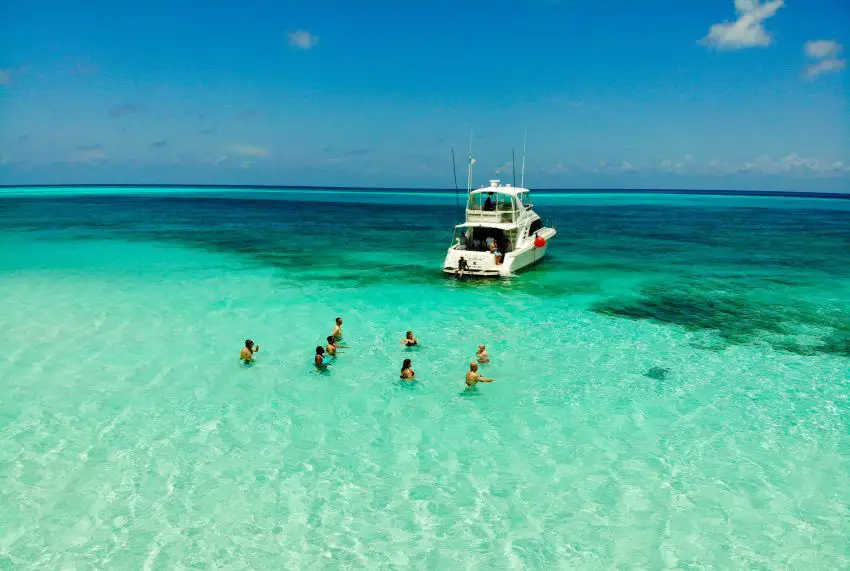
Ah, Isla Cozumel, so close to being a true confluence of the best of Mexico, the Mundo Maya, and the Caribbean. It sits just 30 minutes offshore by ferry and is home to a mere 88,000 souls. But alas, it’s one of the world’s most visited cruise ports of call, and staying clear of the invasion is harder and harder. Mega-vessel dockings are daily and can average over 50,000 weekly visitors. Still, finding quiet spaces in the morning and early evenings might be enough compensation. The island’s west-facing beaches (clear of the seaweed that takes over QR during part of the year) are truly idyllic; it’s where those Corona beer commercials used to be filmed. Cozumel is a very friendly place that keeps its rhythm alongside Mayan, familial cultural connections with the mainland.
Two other islands draw the attention of the “gotta-have-a-beach” transplants. Of course, there’s Isla Mujeres, forever lingering on the horizon north of the Cancún resort zone. Isla’s fall to the all-inclusive resort trend was, I guess, inevitable. But it’s still a very cool place for “life-in-a-golfcart” mobility and there are still Mayan fishermen here. Drinking water shortages and ferry-only access keep the place a reasonable option for the hearty Caribbean Island fanatic.
Far more isolated is Isla Holbox, secluded along QR’s wild north coast. A smaller enclave of the more barefoot-bohemian cohort just loves it hee. It’s a throwback to QR from a couple of generations ago. Quiet, ungentrified, and friendly – albeit with not a whole lot of year-round living housing choices.
Bacalar
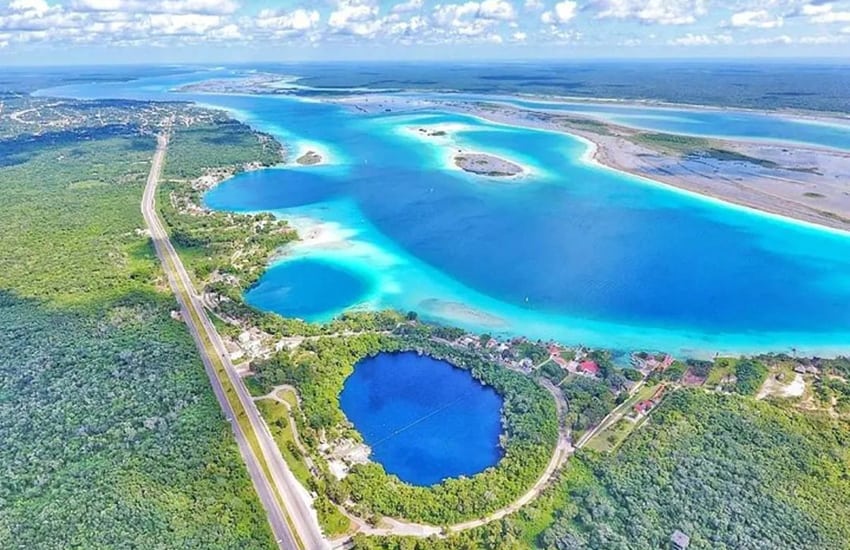
On the edge of the border with Belize, Bacalar presents the opportunity to live in closer harmony with nature than anywhere else in the state. The tradeoff, of course, is that there is significantly less in the way of creature comforts. This results in the second lowest score given to any of the destinations on the list (after Tulum), but do not let this mislead you — there is plenty to love about Bacalar.
While the overarching theme of our guide to Quintana Roo has been one of development, luxury and a loss of character, this is not the case in Bacalar. Known as the “Maldives of Mexico” for good reason, life around the lagoon strikes a delicate balance between respecting nature and providing a modern standard of living.
While fine dining and international airport access are in short supply, pristine waters, plenty of engaging activities and sense of peace abound in Bacalar.
Tulum
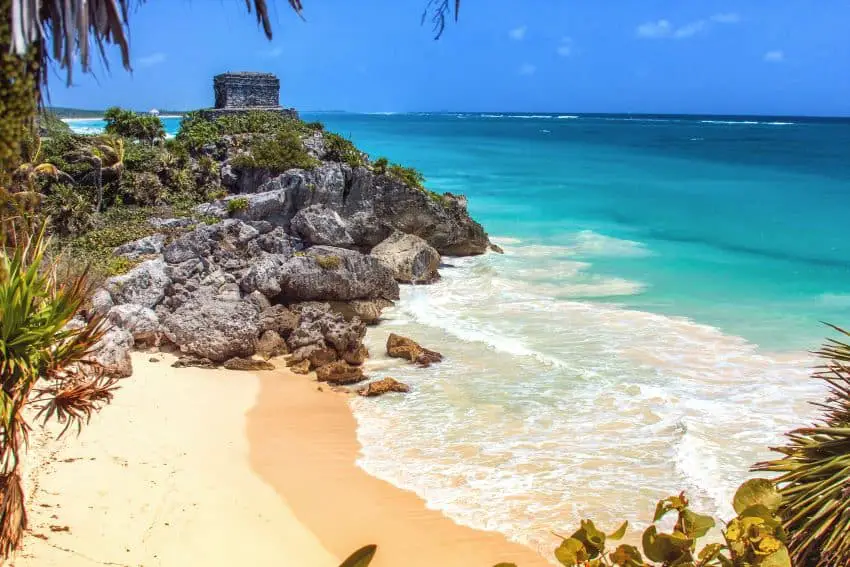
Sitting adjacent to the remarkable Sian Ka’an Biosphere Reserve is Tulum, the two-headed (beachfront and inland city) place that may someday take over as Quintana Roo’s most troubling example of unfettered growth. Its Mayan archaeological site, silky Caribbean waters, and wellness-themed small hotels contend with becoming QR’s next pole for uncontrolled development and environmental impacts. The new international airport now provides connectivity. Anyone who’s lived here for more than a few years laments what’s gone wrong. But how can you deny the appeal of a place consistently named the best beach in The Americas?
Also consider, your family and friends will find just about any reason to come down for a stay. You’ll need that spare bedroom. Where I live now in central Mexico, my kids have had enough. They all want to party in the Mexican Caribbean. Bringing compatible lifestyle intentions, many of those migrating here can’t imagine living elsewhere.
The ratings
A full breakdown of our rating system can be found here.
![]()
What did we get right? What do you disagree with? Let us know in the comments.
You can see more of our Where to Live in Mexico 2024 series here.
Author Greg Custer lives in Mexico. He’s worked for over 40 years in international tourism, educating travel advisors around the world about Mexico and other Latin American destinations. He helps folks explore Mexico for living at www.mexicoforliving.com. Greg first visited Cancun in 1979. He has worked on behalf of Quintana Roo tourism marketing agencies for decades, allowing him to see what it has become: the good (great!) and the head-scratching “What happened?!”
